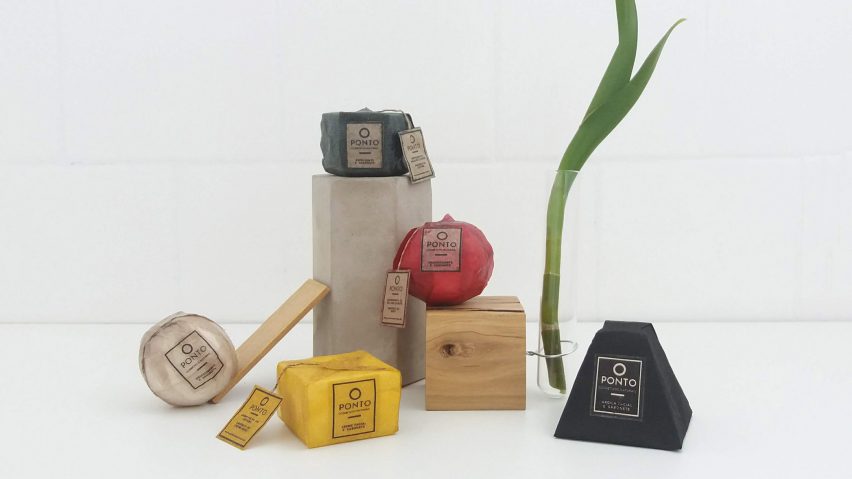
Elena Amato creates sustainable cosmetics packaging from bacteria
Guatemalan designer Elena Amato has created sheets of bacterial cellulose with paper-like qualities as a sustainable alternative to the plastic packaging used in personal care products.
The bacterial cellulose sheets were developed using a mixture of water and a bacteria and yeast (scoby) culture, which is blended together before being spread out on a flat, smooth surface and left to dry.
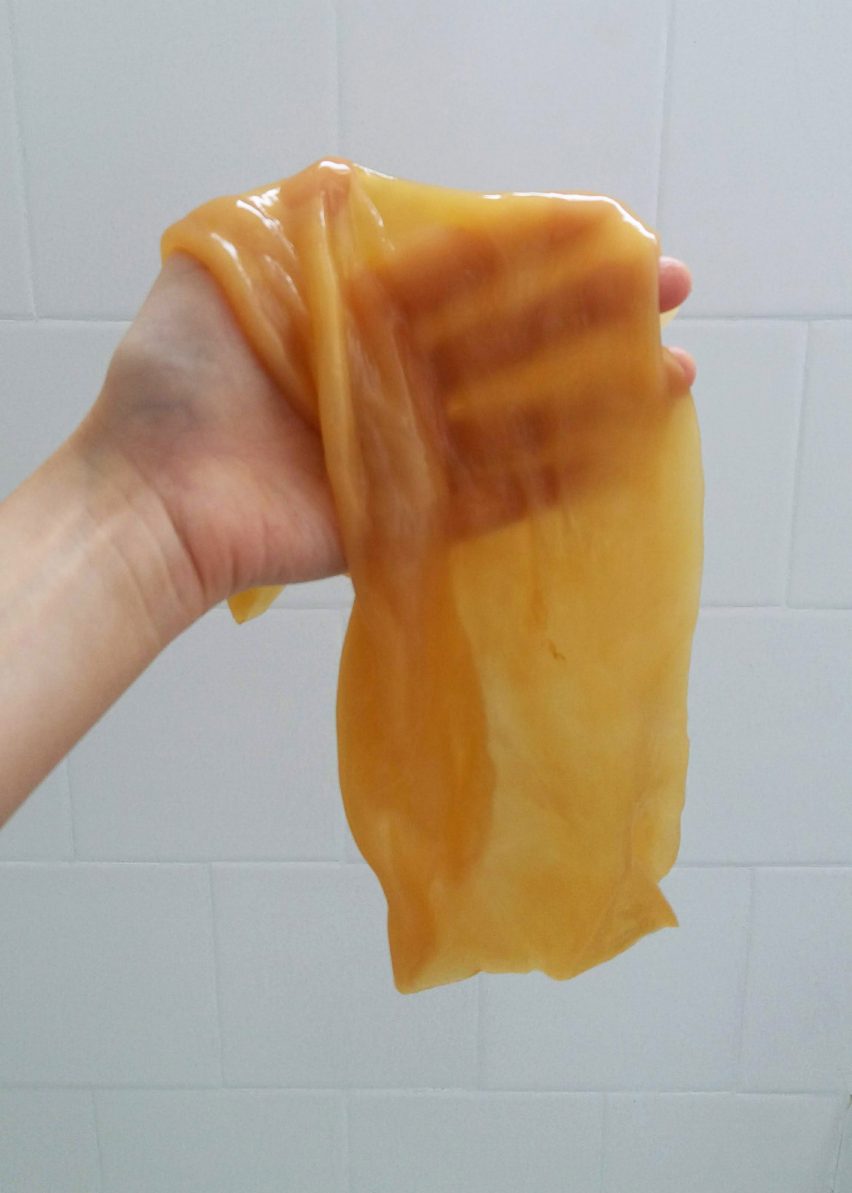
Instead of growing and cultivating the scoby from scratch, Amato uses residual scoby leftover from local Kombucha producers – a fermented drink made from sweetened tea and scoby.
The resulting sheets are a material with characteristics that Amato describes as somewhere between paper and plastic.
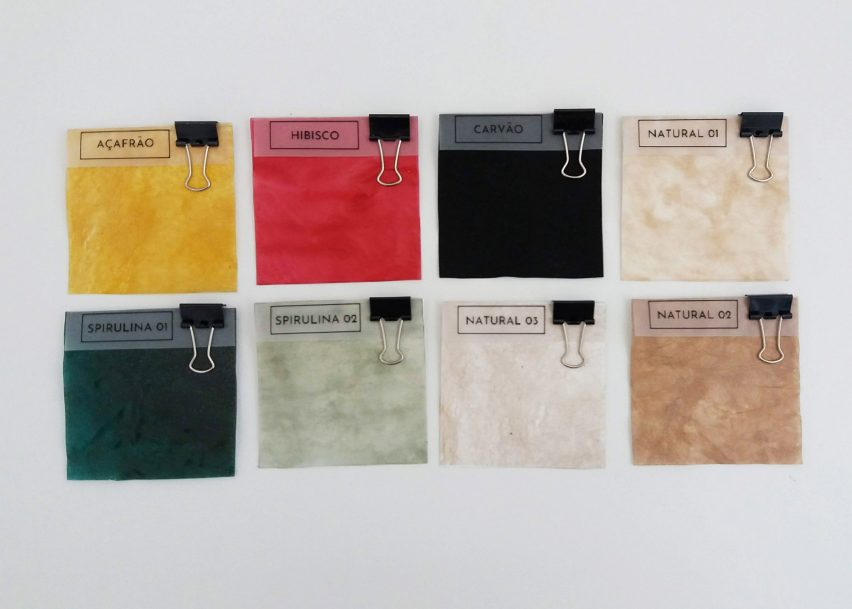
The dried bacterial cellulose material can be glued together using water, eliminating the need to use glues or other adhesives when sealing the packaging.
Natural pigments such as spirulina, hibiscus, saffron and charcoal were added to the mixture during the blending process to achieve different colours.
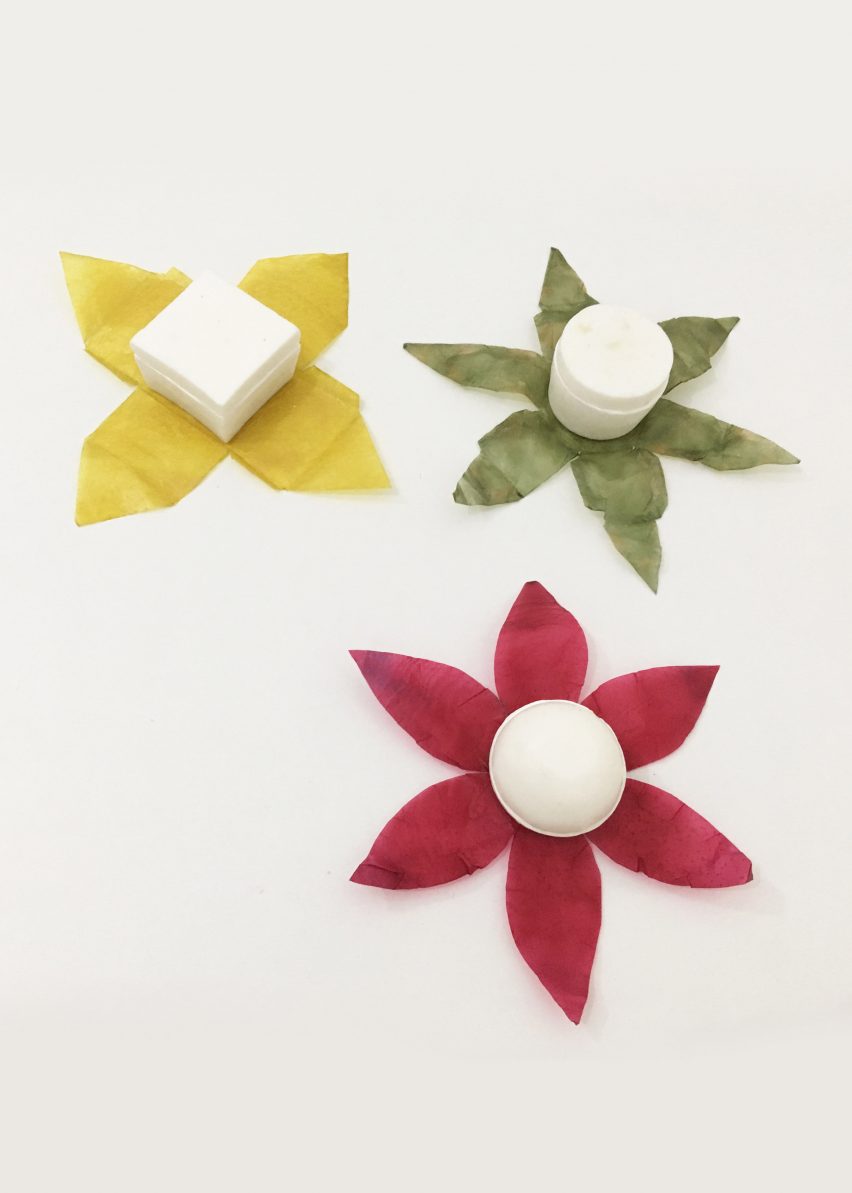
Made from renewable resources, the material also grows quickly, as well as being fully compostable and vegan.
In addition to these qualities, the low-tech manufacturing process has a minimal level of energy consumption, and Amato envisions it being made locally to generate jobs in the area as well as eliminating the need to transport raw materials from far away.
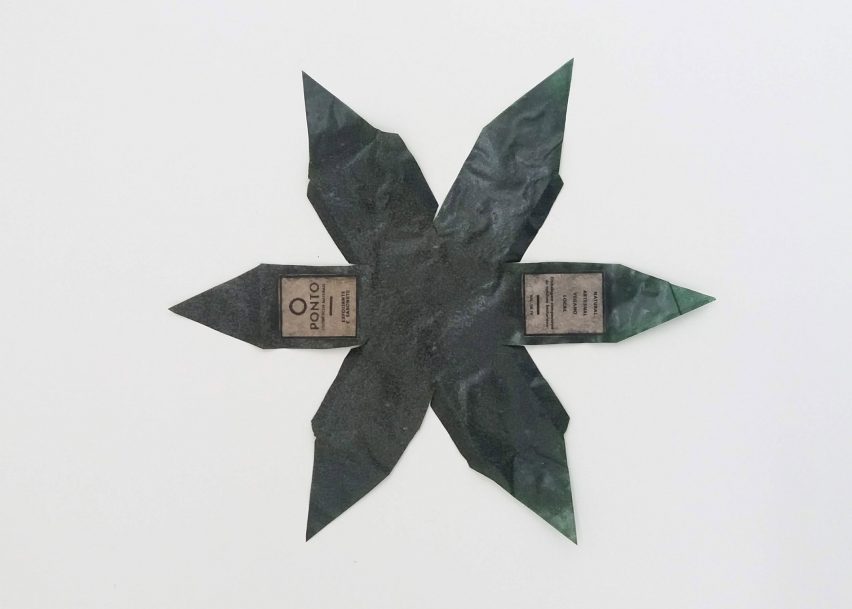
In keeping with the principles of a circular economy, Amato aimed to create an eco-friendly packaging with materials that would "flow in integrated and regenerative loops".
"Currently, our economy works mainly on a linear, unsustainable 'take – make – dispose' system," explained the Brazil-based design graduate.
"In contrast to that system, the circular economy suggests that materials should flow in integrated and regenerative systems as technical and biological nutrients, maintaining their value."
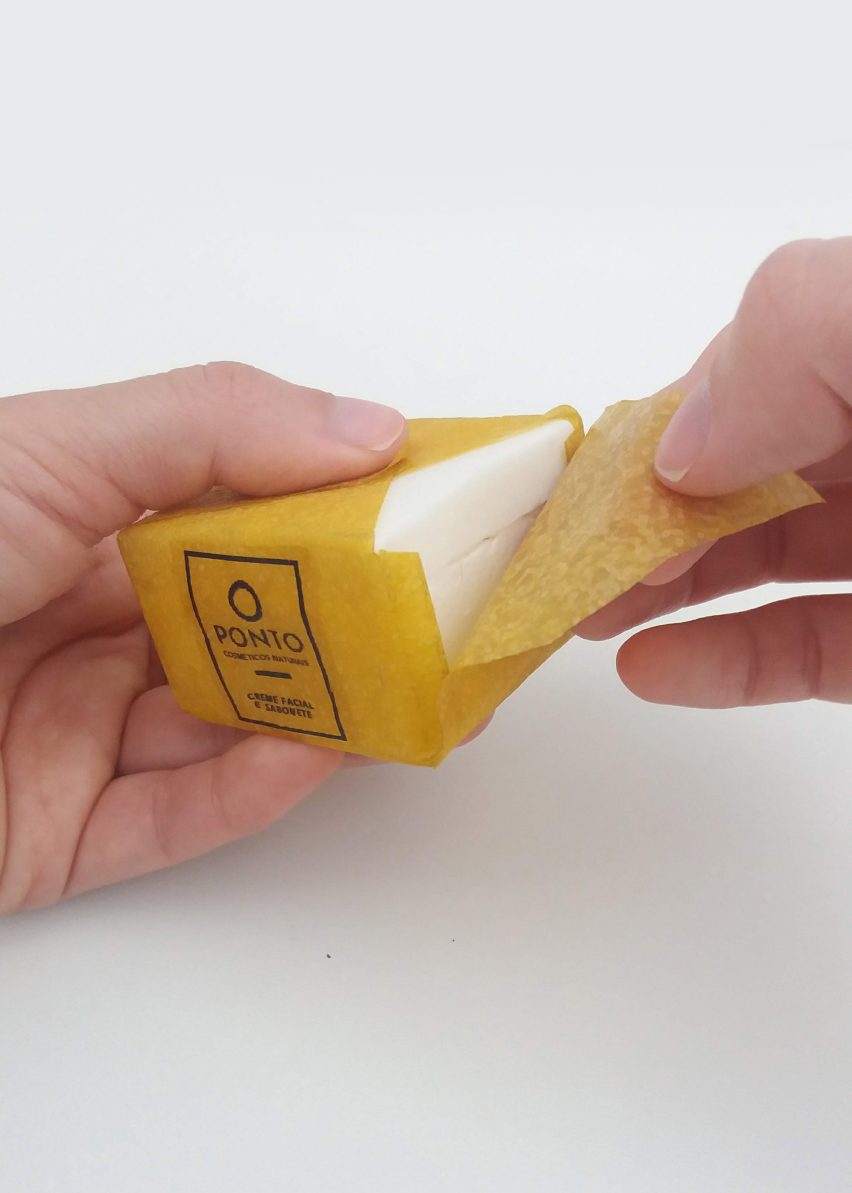
She designed her packaging concept to have three layers and imitate the natural packaging system found in the structural layers of a piece of fruit, comprised of juice, pulp and an outer peel.
The internal layer of Amato's design is the personal care product – such as face cream, deodorant or facial clay. The second layer is a capsule-like container made of solid natural soap, used to store the natural product inside.
The third, external layer is the sheet made from bacterial cellulose, and is used to protect the soap container beneath, while also displaying the branded information of the product.
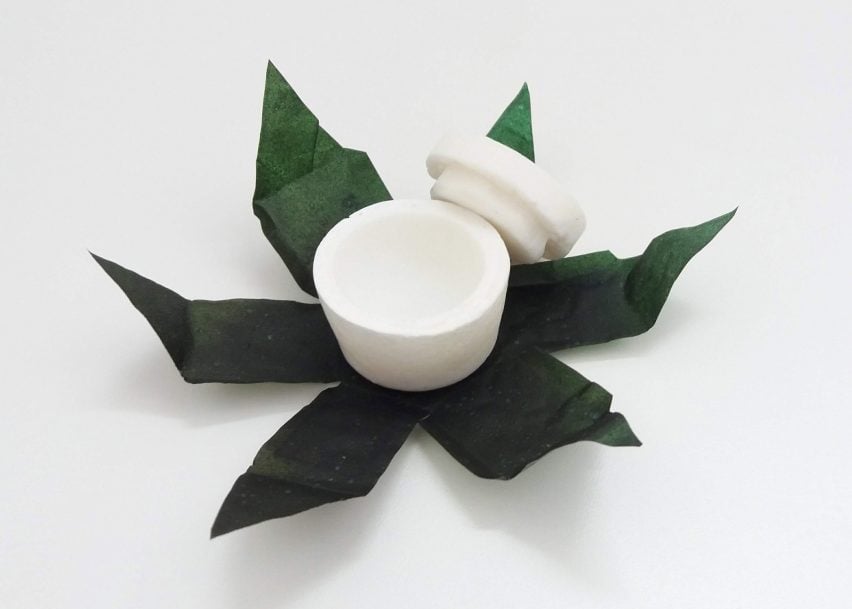
"Unpacking and using the product replicates the act of peeling and consuming a fruit, and brings a natural feeling to it," the designer explained. "This idea was inspired by the concept 'unpack less, peel more'."
"After removing the wrapping, the costumer can enjoy the creamy product. When the container is empty, the base and lid will be used as bar soaps just like the juice and pulp of a fruit can be fully utilised," she continued.
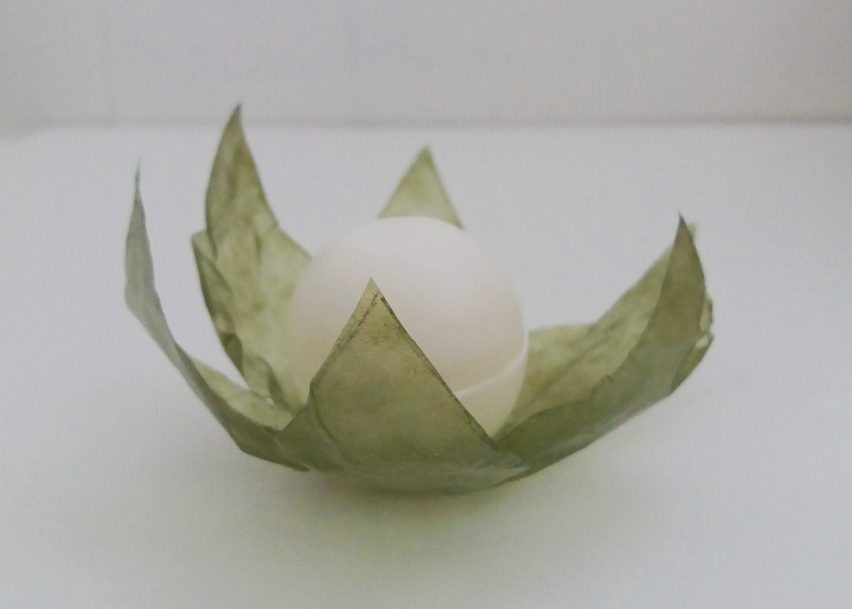
Amato is just one of many designers experimenting with bacterial cultures to create sustainable alternatives to plastic. Emma Sicher, for example, fermented scoby with fruit and vegetable leftovers to create disposable packaging, while Roza Janusz used scoby to create a food packaging that can either be eaten after use, or composted.